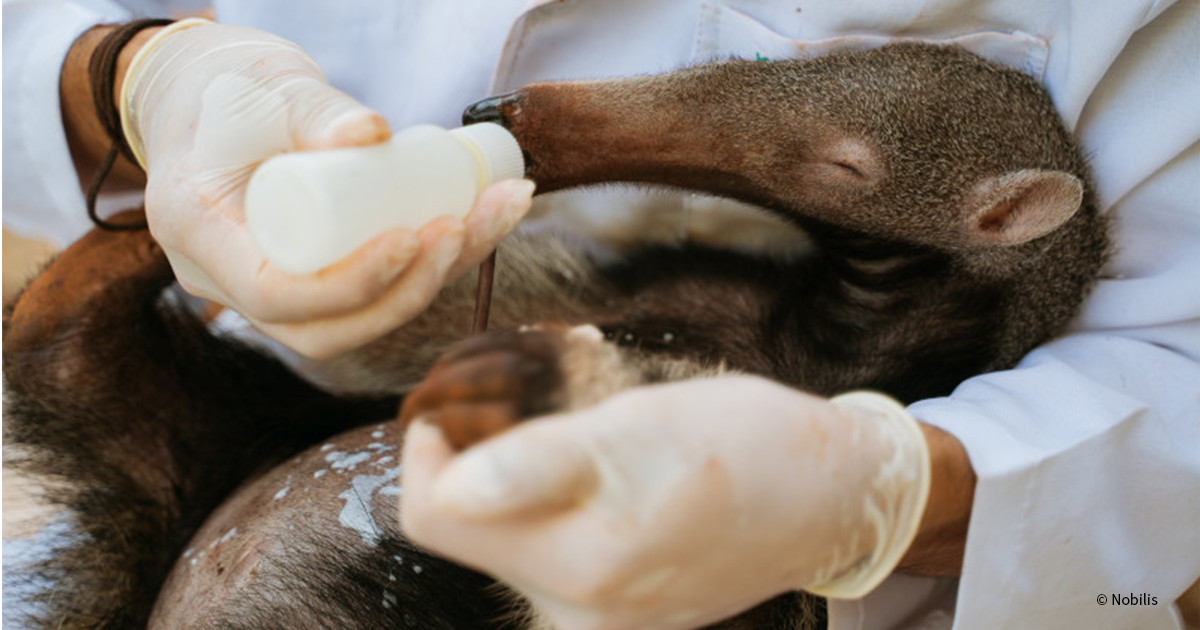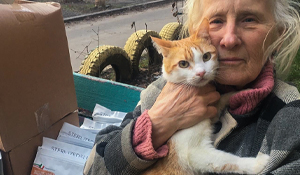9 Things to Know About the Pygmy Slow Loris
The pygmy slow loris has gained popularity due to social media in the last few years. Unfortunately, the attention has not been the positive kind. Many videos showcase lorises as pets, causing increasing concern from conservationists that this type of social media content could further harm the dwindling population through illegal animal trafficking.

Greater Good Charities is dedicated to the conservation of species identified as in peril, threatened, endangered, or close to extinction throughout the world, including the pygmy slow loris. Through education, we can better protect these animals from the illegal pet trade, and keep them in their natural habitats, so they can survive and thrive.
9 Common Questions about the Pygmy Slow Loris:
The slow loris may look adorable, but they pack a harmful bite. The world’s only venomous primate, their venom is powerful enough to rot flesh. They have glands underneath their armpits that secrete a noxious oil. When they lick those glands, their saliva combines with the oil to create venom. The venom fills their canine teeth and when they feel their territory is threatened, their bites are strong enough to cause significant damage to their victim’s flesh and in some cases, strong enough to kill a small mammal. They also use their venom when grooming themselves to ward off parasites.
The slow loris has several natural predators. They include snakes, eagles, pythons, hawks, orangutans, but especially humans. However, when these tiny primates are threatened, they hiss fiercely and release a strong odor. If they continue to be threatened, the loris makes a pose mimicking the expanded hood of a cobra, intimidating the predator to leave it alone.
The pygmy slow loris is not a monkey, but is a primate. The slow loris species belongs to the genus Nycticebus, which translates to “Night Monkey,” presumably because it's nocturnal and has a monkey-like appearance. The pygmy slow loris is also part of the Strepsirrhini primate group, which includes lemurs, bushbabies, pottos, and slender lorises.
All nine slow loris species are decreasing in population with statuses ranging from vulnerable to critically endangered. The exact number of slow lorises remaining in the wild is unknown, but conservationists say populations have declined by at least 80% in the last 24 years. Slow lorises are among the world's most endangered primates.
While not typically aggressive, young slow lorises show more aggression than their adult counterparts. This behavior is thought to deter potential predators. In human care, the lorises are often observed grooming each other and show little aggression in their family groups.
However, slow lorises are very territorial and will use their venomous bite when they feel their space is threatened.

There are two ways in which the pygmy slow loris communicates - vocally and through smell. They make a musical sound when contacting each other, a growl or hiss when threatened, and use whistles to attract a mate during breeding season. They also use their urine to mark their territory or when attracting a mate. Female lorises tend to prefer males that smell familiar to them.
Not as slow as a sloth, but the slow loris is still slow. Moving at only 1.18 miles an hour, they can move slightly faster at night when hunting, with their max speed being around 1.24 miles an hour.
The slow loris thrives in diverse forest settings, ranging from tropical dry forests to semi-evergreen and evergreen forests. They are arboreal, meaning they live in trees and are often found nestled among branches or traveling by using vines. Slow lorises play a vital role in ecosystem vitality. Their activities, such as seed dispersal and insect regulation, help to maintain biodiversity.
They also help with pollination — as they consume nectar, they inadvertently transfer pollen between plants. Their digestion of fruits aids in seed dispersal, contributing to forest vegetation. Without the presence of slow lorises, the balance of their habitats would be compromised. Protecting the slow loris is critical for keeping the delicate ecosystems in which they live thriving.
Currently, the largest danger the slow loris faces is the illegal pet trade. Due to the increase in social media attention, they have become popular pets due to their size and appearance. Sadly, entire families living in the wild are often captured for the illegal pet trade. To make them easy to handle, some poachers cut their teeth with clippers, wire cutters, or pliers with no anesthetic before selling them into the illegal pet trade. Many lorises die in the process of being captured as pets.
Additional threats to the slow loris include habitat loss from deforestation and illegal poaching for souvenirs and traditional medicine.
How can you support species like the Pygmy Slow Loris?
You can support endangered species like the pygmy slow loris through Global Discovery Expeditions.
Global Discovery Expeditions is a program of Greater Good Charities, dedicated to exploring, studying, and protecting key biodiversity hotspots facing imminent threat and loss by providing the initial key step in conservation – the observation and recording of living species within an ecosystem.



